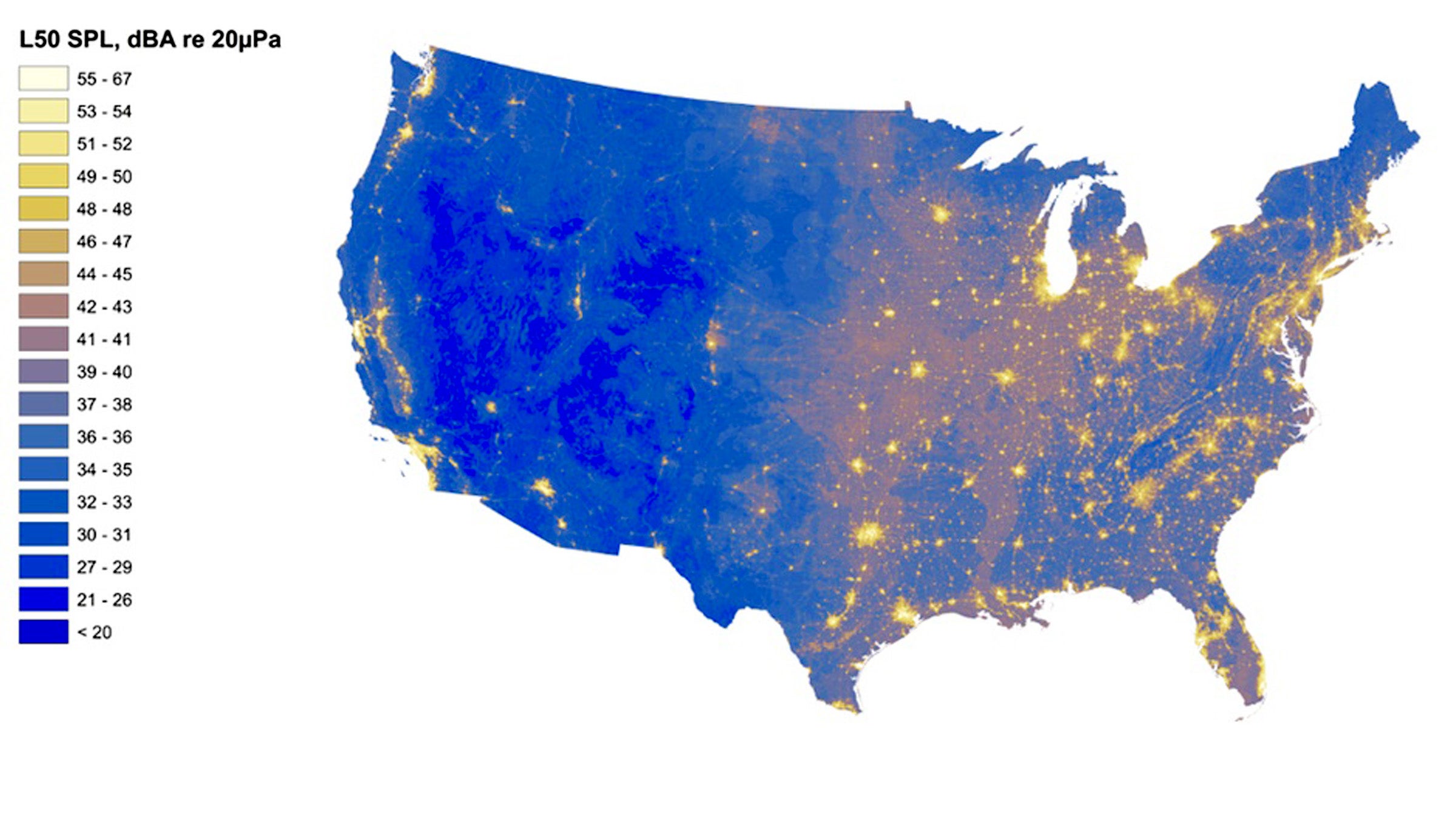In an effort to gauge noise levels throughout the United States, the National Park Service’s (NPS) has showing how much ambient noise you can expect to deal with based on where you are in the country. Not surprisingly, metropolitan areas are by far the loudest, but their noise can spill over into wild places.
Scientists from the NPS presented their map at the American Association for the Advancement of Science’s annual meeting on Monday. , the NPS took 1.5 million hours worth of noise measurements at 546 park sites across the country to create its map. The bright yellow areas, such as New York City, Los Angeles, and Dallas, are the loudest, while the dark blue regions, like Yellowstone National Park, are the quietest.
Even though national parks aren’t as loud as cities, senior scientist Kurt Fristrup “noise and light issues span much of the continent,” an increasing concern for the NPS. “Parks are experiencing an ongoing acoustic assault by everything from air tours to maintenance equipment,” . “Such noise affects visitors’ perceptions of solitude and tranquility.” It’s also affecting the wildlife, forcing them to adapt their hunting and mating behaviors, . The NPS hopes this data will help spur improvements.
“Unlike many other forms of environmental degradation, sound and light offer opportunities for rapid improvement,” Fristrup told CBS News.


